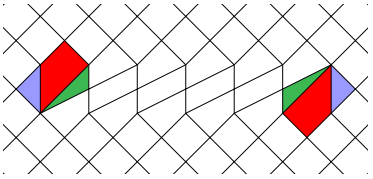THESISONDERWERPEN QUANTUM GROUP

Quantum computation with defects in topological phases
Topic: Quantum Information
Promoter(s): Jacob Bridgeman, Frank Verstraete
Supervisor(s): Jacob Bridgeman, Lander Burgelman
Context
Central to the realization of a large scale quantum computer is the ability to store and manipulate quantum states in a way that tolerates errors arising from environmental noise. By storing information in degrees of freedom that cannot be locally accessed, topological codes provide some protection.
The simplest topological codes are toric/surface codes. Although incredibly technically challenging, there has been experimental progress towards implementation of surface code [1]. Unfortunately, the logical gates that can be implemented in a fault-tolerant way is severely limited in this class of codes.
One way to improve the computational power of a topological code is to introduce defects, such as boundaries or interfaces [2]. Ideally, with the inclusion of the right defects, a universal set of gates can be implemented. This forms the topic of this master’s thesis.
Goal
The goal of this thesis is to investigate how the inclusion of defects influences the computational power of the code. In particular, the student will start by understanding how universal quantum computation is achieved in the surface code via inclusion of ‘non-Abelian islands’ in [3]. Following this, we will apply the analysis to other kinds of islands, more realistic from an experimental point of view, and see if universality can be retained. If not, we will examine what conditions are needed for it to be recovered.
- K. J. Satzinger et al. Realizing topologically ordered states on a quantum processor, Science 374, 1237-1241, arXiv:2104.01180 (2021)
- E. Dennis, A. Kitaev, A. Landahl, and J. Preskill, Topological quantum memory, Journal of Mathematical Physics 43, 4452, arXiv:quant-ph/0110143 (2002)
- K. Laubscher, D. Loss, and JR Wootton, Universal quantum computation in the surface code using non-abelian islands, Physical Review A 100, 012338, arXiv:1811.06738 (2019)
